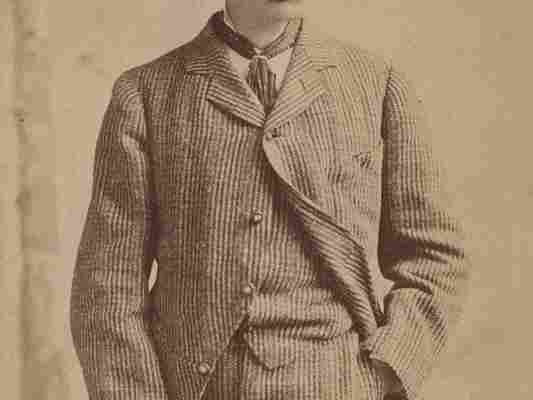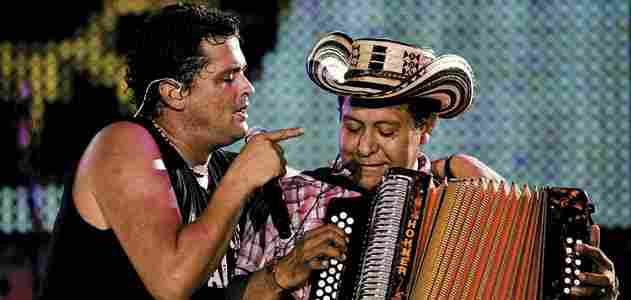Beneath the Surface

The frugal Winslow Homer was at his most parsimonious with words—especially when asked to reveal his aesthetic ideas or his methods of working. "I think it would probably kill me to have such a thing appear," he told a friendly writer who proposed a biography. The artist doggedly rebuffed all such overtures, left only a thin trail of correspondence and remained resolutely tight-lipped, particularly about his artistic views.
But his more than 700 watercolors provide scattered biographical and artistic clues. In the most recent investigation into his methods, mounted by the Art Institute of Chicago, a meticulous study focused on 25 watercolors.
Using a microscope, Kristi A. Dahm, assistant paper conservator at the Art Institute, discovered lines of black pigment—from carbon paper—barely visible in Homer's Man with Plow Horse , an indication that Homer transferred the design from another drawing or sketch. He used carbon paper in the 1860s and 1870s to make copies of his works, to experiment with winning designs in various media and to save time—all of prime concern to Homer.
To create the look of foam in The Watcher, Tynemouth in 1882, Homer used green and blue washes mixed with red for the ocean, let the paint dry, dipped a brush in clear water and made swirls in the waves. He scraped soft pigment from other parts of the picture to produce the look of crashing waves, and then let this dry before adding touches of opaque white watercolor to create areas of thick foam.
Researchers found tiny grains of silica—from sandpaper—buried throughout the surface of Prout's Neck, Breakers , a watercolor Homer completed in 1883. In this picture, where waves rumble over a shelf of rocks and throw up clouds of spray, the artist laid in a blue-gray wash for the sky, allowed it to dry and gently sanded down spots of pigment to the ivory-colored paper beneath, thus summoning up the look of mist and spray. Sanding, scraping and similar methods were known to English watercolorists of Homer's day but were seldom used in America. By studying handbooks and perhaps by interviewing English practitioners, Homer paved the way with these watercolor techniques in the United States, where they are still used.
Homer deployed a knife blade to flick a speck of color from the eye of guide Rufus Wallace, paddling a canoe in Adirondacks Guide . The artist's precision surgery, discovered by microscopic analysis, puts a well-placed glint in the boatman's eye at a moment of reflection.
Analysis of several other works shows that time has altered Homer's original intentions, causing the red skies to fade in such watercolors as The Lone Boat, For to Be a Farmer's Boy and North Woods Club, Adirondacks . In each, Homer touched up the skies with a pink madder wash from red lake pigment, which eventually disappears. To simulate the look of Homer's originals, the Art Institute has produced digital reconstructions on its Web site, www.articdu/aic/research/homer.
"We did not set out to demystify Homer," says Martha Tedeschi, the Art Institute curator who conceived the project. "But we have gotten some insight into how this master technician achieved what he did with his watercolors—his works of effortless complexity. He made it look easy, but now we know it wasn't."
Frybread

On Dwayne Lewis's first night home on the reservation in northeastern Arizona, he sat in the kitchen, watching his mother prepare dinner. Etta Lewis, 71, set the cast iron skillet on the burner, poured in corn oil, and lit the stove. She began moving a ball of dough back and forth between her hands, until she'd formed a large pancake. She then pierced a hole in the center of the pancake with the back of her thumb, and laid it in the skillet. The bread puffed, and Etta turned it once with the fork, and flipped it over. It's not easy to fashion the perfect piece of frybead, but it had only taken Etta a few seconds to do it. She'd been making the food for so long that the work seemed part of her.
For Lewis and many other Native Americans, frybread links generation with generation and also connects the present to the painful narrative of Native American history. Navajo frybread originated 144 years ago, when the United States forced Indians living in Arizona to make the 300-mile journey known as the "Long Walk" and relocate to New Mexico, onto land that couldn't easily support their traditional staples of vegetables and beans. To prevent the indigenous populations from starving, the government gave them canned goods as well as white flour, processed sugar and lard—the makings of frybread.
Frybread appears to be nothing more than fried dough—like an unsweetened funnel cake, but thicker and softer, full of air bubbles and reservoirs of grease—but it is revered by some as a symbol of Native pride and unity. Indian rocker Keith Secola celebrates the food in his popular song "Frybread." In Sherman Alexie's award-winning film Smoke Signals , one character wears a "Frybread Power" T-shirt. Bothmen call frybread today's most relevant Native American symbol. They say the food's conflicted status—it represents both perseverance and pain—reflects these same elements in Native American history. "Frybread is the story of our survival," says Alexie.
And yet, this cultural unifier is also blamed for contributing to high levels of diabetes and obesity on reservations. One slice of frybread the size of a large paper plate has 700 calories and 25 grams of fat, according to the U.S. Department of Agriculture. In some Native American communities, like the Gila River Pima tribe outside Tucson, Arizona, health service workers estimate that over half the adult population suffers from diabetes. Chaleen Brewer is a nutritionist at the Genesis Diabetes Prevention Program based in the Gila River capital of Sacaton. She says commodity foods like processed cheese, potted meats, and the lard used in making frybread are partly responsible for a "diabetes epidemic" among her people. As Secola puts it, "frybread has killed more Indians than the federal government."
Why are some Native Americans so eager to celebrate a food that represents the brutality of the past and may be harming them in the present? One reason is the food's central role in powwows, intertribal fairs that bring together native artists, religious leaders, musicians—and food vendors. Throughout the 19th century, the Federal government often prohibited intertribal gatherings, and as proud expressions of Indian identity, today's powwows are partly a reaction against that past suppression. Many powwows host frybread competitions, and you'll typically find long lines at frybread stands. Last winter, Leonard Chee, a high-school history teacher who works part-time as a frybread vendor, drove his concessions trailer 330 miles from the Navajo capital in Window Rock to the Thunder in the Desert Powwow in Tucson, Arizona. Eating a slice of frybread at a powwow is like "absorbing everything about the event," he says, adding: "A powwow won't function without frybread."
Chee grew up on the Navajo reservation in Arizona, outside Window Rock. On this reservation, which spans 27,000 square miles of northern Arizona and extends into Utah and New Mexico, some 43 percent of the 180,000 residents live below the federal poverty line, according to Navajo Nation statistics. Unemployment stands at 42 percent. Nearly 32 percent of homes lack plumbing. As a child, Chee sometimes subsisted on frybread. When he says "frybread is Navajo life," he insists he is not glorifying his childhood poverty but accounting for a shared experience of adversity. "Frybread connects tribes," Chee says.
The food's complicated significance was highlighted in 2005 when Indian writer and activist Suzan Shown Harjo led a crusade against frybread in the newspaper Indian Country Today . "Frybread is emblematic of the long trails from home and freedom to confinement and rations," Harjo wrote. "It's the connecting dot between healthy children and obesity, hypertension, diabetes, dialysis, blindness, amputations, and slow death. If frybread were a movie, it would be hard-core porn. No redeeming qualities. Zero nutrition."
The article provoked a flurry of blog posts, letters and follow-up columns from Indians indignant at the attack on such a significant food. Secola believes that Harjo has turned frybread into a scapegoat for the larger problems afflicting reservations, such as the lack of healthful food, nutritional education and good access to health care. He also says it is unrealistic to eradicate a food that holds so much cultural power for Native Americans. The theme of his song "Frybread" is perseverance against oppression. The lyrics describe how the culinary police—Colonel Sanders, Captain Crunch, and Major Rip-Off—try to steal frybread from the people. "But they couldn't keep the people down," Secola sings, "because born to the people was a Frybread Messiah, who said ‘You can't do much with sugar, flour, lard and salt. But you can add one fundamental ingredient: love.'" "Frybread" the song, like frybread the food, is about making something out of nothing.
Dwayne Lewis, who learned the frybread tradition from his grandmother, has staked his economic survival on the food. In November 2006, after selling frybread for years on the powwow circuit, he and his brother Sean opened their restaurant, Arizona Native Frybread, in Mesa. The inside of the cafe has a fast food feel, with plastic booths and an open kitchen. At the counter, you can buy Native American newspapers and "Men and Women of the Navajo" calendars, featuring film and rock stars. The restaurant menu includes traditional Navajo dishes like hominy stew (made with chili, hominy corn and lamb) and a variety of frybread sandwiches, including "Native American tacos" made with green and red chili and beans. Each sandwich is wrapped in an enormous slice of frybread and costs between $6 and $8. The restaurant offers a single slice of frybread for $3.59. These prices are much higher than on reservations, where it's possible to buy a Navajo taco from a road side stand for under $5.
After a year of business, Arizona Native Frybread is struggling. But Lewis is undeterred. "There are very few independent Native American businesses," he says. For Lewis, frybread is a source of pride, because it has allowed him to escape the poverty of the reservation and pursue his dream of becoming an entrepreneur. He has little concern for the frybread controversy or, for that matter, the bread's symbolic value. His is a utilitarian equation. Frybread tastes good. Everybody wants it. So he is selling it.
Golden Grail


These days, with the mighty greenback looking green at the gills and the euro laughing all the way to the bank, even our once-durable coinage is under assault. Critics are calling for the extinction of the penny; although Thomas Jefferson still graces the nickel, his portrait has been reworked; and quarters come in 50 flavors. And whatever happened to the half dollar? What's worse, nobody seems to care about the aesthetics of pocket change.
There was a time when coins were small masterpieces crafted by artists, when no less a personage than President Theodore Roosevelt took an interest in their design. Two almost impossibly rare gold pieces in the collection of the Smithsonian National Museum of American History (NMAH) testify to TR's quest for numismatic glory.
In the early 1900s, the president decided that the $20 double eagle (fashioned after the $10 coin bearing the image of our national bird), in circulation since the mid-19th century, needed a face-lift. To do the job, he called on America's preeminent sculptor, Augustus Saint-Gaudens, who had designed TR's 1905 inaugural medal.
Although Saint-Gaudens was terminally ill—he would die of cancer in August 1907—the sculptor created what many consider to be the most beautiful coin this country ever minted. One side depicts an eagle in flight; on the obverse, the figure of Liberty strides forward, torch in one hand and olive branch in the other, her hair streaming behind her. The model was Harriette Eugenia Anderson, a young woman originally from South Carolina; Saint-Gaudens described her as "certainly the handsomest model I have ever seen of either sex."
The new double eagle, introduced in 1907, was coin of the realm for the next 16 years, until Teddy's cousin, President Franklin Roosevelt, moved the country off the gold standard in 1933. Gold coins of all denominations were ordered exchanged for paper currency. (Collectors were exempted from the law, a loophole that has resulted in any number of lawsuits.)
At the nation's Mints in 1933, gold coins were melted down and converted into ingots. According to Alison Frankel, author of Double Eagle: The Epic Story of the World's Most Valuable Coin , George McCann, a laborer at the Philadephia Mint, seems to have succumbed to a temptation—just as the last of the uncirculated 1933 double eagles were headed to the melting chamber. "There are many instances," says Frankel, "of people pocketing coins that are about to become rare."
Only nine days later, after 2,000-degree fires had turned most of Saint-Gaudens' masterpieces into mush, a Philadelphia jeweler, Izzy Switt, would sell one double eagle, almost certainly obtained from McCann, to a coin collector.
Because 1933 double eagles were never circulated and were thought to have all been melted down, collectors view the handful in existence as the most numinous of numismatic treasure. Mystery continues to surround them. "We don't know how many survived," says Richard Doty, an NMAH curator.
According to Doty, the Smithsonian received its pair of 1933 double eagles in 1934. The federal government donated the gold pieces, Doty says, as "coins of record." (NMAH holdings contain examples of virtually every form of coinage produced by the U.S. Mint.)
Another 1933 double eagle to escape destruction owes its existence to Egypt's King Farouk. A passionate coin collector, Farouk somehow arranged for a double eagle to be shipped to Cairo only days before Secret Service agents began rounding up all unsurrendered gold coins. After Farouk was overthrown in 1952, his extensive collections were auctioned. One lot contained his double eagle; the United States demanded that it be returned. Though the Egyptians removed the coin from auction, it disappeared for many years.
In the mid-1990s, a 1933 double eagle—in all likelihood Farouk's—turned up in the hands of British coin dealer Roger Fenton. After a convoluted legal battle, it was auctioned at Sotheby's for $7.59 million in 2002. (Fenton and the U.S. government split the proceeds.)
At the time, this coin and the Smithsonian's pair were thought to be the only 1933 double eagles. But then, in August 2005, says Doty, "ten more surfaced." The owner: none other than Philadelphia jeweler Izzy Switt's daughter. The federal government wants those coins back. Lawsuits are pending. "I've seen all ten at an exhibition in Denver," Doty says. "For collectors, it was a religious experience."
Owen Edwards is a freelance writer and author of the book Elegant Solutions .




Post a Comment